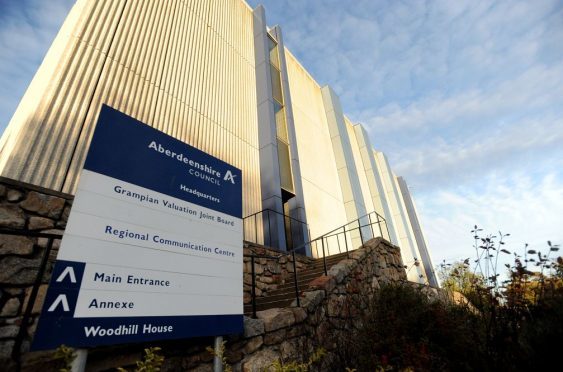More than 60 jobs could be axed, the cost of music tuition in schools increased and free car parking spaces reduced as Aberdeenshire Council prepares to balance the books in its latest budget by saving almost £40 million.
Last month, Aberdeenshire councillors voted unanimously to increase council tax for residents by the maximum 4.84% allowable for the upcoming financial year as part of efforts to weaken the blow of upcoming cuts on local services.
Now a wide range of recommendations have been made to help the authority save the £39,567,000 required to achieve a balanced budget for the next year.
To reach the target, a report which elected members will consider before reaching a decision at a full council meeting next week has recommended all manner of options for making savings throughout the budget.
The report recommends £1,572,000 be cut from the authority’s education and children’s services budget, £951,000 from the infrastructure budget and £1,961,000 from business services.
If approved, music tuition in primary and secondary schools could cost more and there could be “increased use of technology for teaching” music in order to save £100,000.
A total of £20,000 could be saved if councillors choose to reduce spend on child community care staff in its employ, and a recommendation to use “alternative delivery models” for early learning and childcare, where management staff would “have responsibilities for two early years settings” would save £400,000.
For the upcoming year, Aberdeenshire Council’s planned income from the Scottish Government’s settlement with Aberdeenshire Council is £452.862 million, more than £5.7 million more than originally anticipated.
However, the report to go before councillors reveals major cuts worth millions of pounds will still need to be made regardless of that windfall.
Alan Wood, the head of finance at Aberdeenshire Council, writes in his report: “While the improved position is welcomed it must be borne in mind that this is compared to officers planned assumptions and is not compared to the need or cost of current levels of service delivery.”
He said the millions of pounds worth of cuts required “far outweighs the marginal improvement described above”.
The report also states that “initial indications” show a reduction of 65.5 full-time equivalent jobs over the next year, from the total workforce of more than 10,200 full-time equivalent staff.
Mr Wood’s report explained that the council’s services will be “reviewing all temporary contracts, considering voluntary severance in areas where functions are being reduced, and seeking voluntary reduction in contracted hours, as well as focusing on redeployment and re-skilling”.
It is currently not clear where the majority of the potential job losses would hit.
Melanie Greenhalgh, from the trade union GMB, said: “There have been cuts before and they are generally targeted at the low-paid workers.
“We will be keeping a very close eye on this and we will not want or accept any compulsory redundancies as a result of these cuts.”
A spokeswoman for the Scottish Government said: “Local authorities will receive total funding from the Scottish Government of £11.4 billion in 2020-21.
“Taken together with the flexibility to increase council tax, councils have the opportunity to increase revenue spending by up to 5.3% in real terms to deliver local services.
“Aberdeenshire Council will receive £494.7 million in 2020-21.”
Of that £4.2 million will be passed to the Health and Social Care Partnership.
The spokesman added: “Together with the decision to increase their council tax by 3% in real terms, the council will have an extra £37.8 million, or 8.8%, to support their day-to-day services compared with 2019-20.”
SNP councillor Richard Thomson, leader of the Aberdeenshire Council SNP group as well as MP for Gordon, said: “We’ll be announcing our full range of proposals next week.
“Our budget will contain a package which protects support for vulnerable pupils, promotes wellbeing, helps to mainstream community budgeting, tackles climate change and supports community resilience.”
